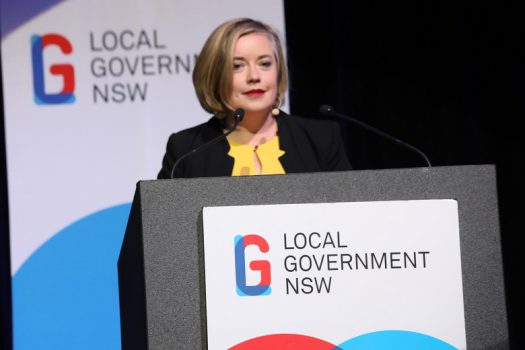
NSW councils say this week’s state budget contains measures that will empower local government to drive a locally led economic recovery.

This includes $550 million for infrastructure over the next 12 months via Restart NSW, and $2 billion for some 3,000 regional infrastructure projects, LGNSW President Linda Scott says.
Councils have also welcomed a $240 million allocation for the Fixing Local Roads and Bridges program, $250 million for the Regional Road Transfer and Road Classification Review and almost $332 million for road safety.
Ms Scott says $490 million over four years to increase the uptake of e-vehicles is another win and a “major breakthrough”, as is the commitment of $852 for the delivery of social and affordable housing, and $149 million for waste and recycling.
“While we do not live in a perfect world and we didn’t get everything we asked for in our submission, there were a lot of positives,” Cr Scott said.
“These outcomes will contribute to councils’ goal of leading local recovery and building future resilience for their communities, and I congratulate the NSW government on handing down this budget.”
Local government minister Shelley Hancock said the budget would help councils deliver infrastructure, facilities and services.
“Local councils are still recovering from the impacts of bushfires, floods and the COVID-19 pandemic so this injection of funds will help them direct more of their resources towards recovery efforts and supporting their communities,” she said.
What the government is excited about:
- $78.5 million to provide pensioner discounts on rates and charges
- $20 million for the Coastal and Estuary Grants Program
- $5.8 million from the Companion Animals Fund
- $5.7 million under the Local Infrastructure Renewal Scheme
- $4.7 million to support two local councils deliver COVID-safe elections in September
- $4.1 million under the Low-Cost Loans Initiative to help councils to invest in infrastructure to address housing affordability
- $500,000 for the design and development of a new database for the NSW Pet Registry
- $50,000 for each of the state’s regional councils under the planning portal grant program to transition to the e-planning system which comes into force from July 1.
What councils are excited about:
- $268 million responding to the bushfire inquiry
- $64 million over four years for the Future Ready Regions strategy
- $380 million over four years for the state’s five renewable energy zones
- $109.5 million over four years for child and adolescent mental health teams
- $150 million to extend the free preschool program
- $80 million for new multi-day walks across NSW
Infrastructure boost
The budget also contains $139.3m for a second round of the Accelerated Infrastructrue Fund.
LGNSW says the additional funding will enable councils in high growth areas to support construction activity and release new homes and employment areas in key greenfield sites.
“This includes funding for councils to deliver stormwater infrastructure, public open space projects and local roads to unlock plans for the development of new homes and employment land,” LGNSW said.
Planning minister Rob Stokes says the AIF, which enabled targeted, rapid infrastructure investment during covid, was a success story in the Government’s economic response to the pandemic.
“Round two of AIF funding allows us to build on those efforts and deliver the vital infrastructure needed to unlock housing like roads, community infrastructure and public space,” he said in a statement.
Meanwhile, he said legislation laying the groundwork for infrastructure contributions introduced into parliament on Tuesday would improve investment by government, councils and developers in roads, transport, public open space and community infrastructure.
“These legislative changes will build a stronger planning system by better matching infrastructure funding with infrastructure outcomes so that we are building better communities, and not merely more homes,” he said.
Key reforms include:
- a new regional infrastructure contributions system to collect levies on development in Greater Sydney, Central Coast, the Hunter and the Illawarra. Shoalhaven and for biodiversity conservation;
- new ways to buy land for public open space at the time of rezoning to reduce acquisition costs;
- changes to Voluntary Planning Agreements
- incentives for councils to fund infrastructure upfront by linking rates to population growth and allowing councils to borrow and pool their funds.
Once legislation is passed, the new system is expected to be implemented and in place by July 1, 2022.
An advisory group representing LGNSW, Local Government Professionals, Property Council of Australia, Urban Development Institute of Australia, Urban Taskforce, and Planning Institute of Australia will be established to consult on delivering the reforms.
Comment below to have your say on this story.
If you have a news story or tip-off, get in touch at editorial@governmentnews.com.au.
Sign up to the Government News newsletter